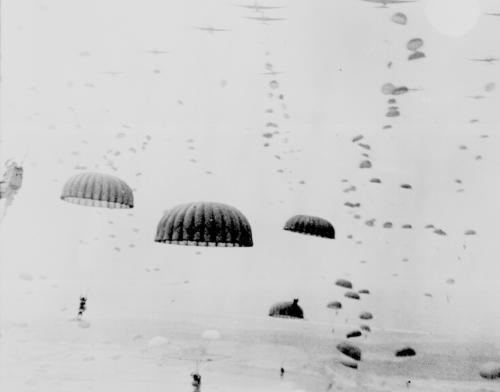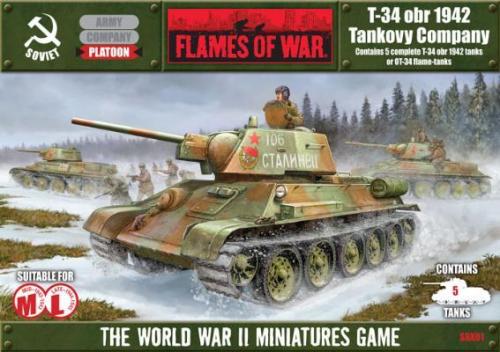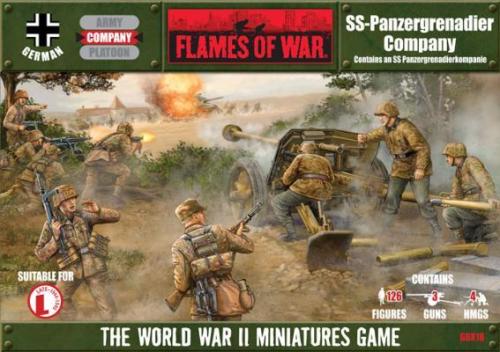
I rolled a 6 for my reserves!
Reserves
The various reserve rules tend be the most influential mission special rules when it comes to list building. Most missions with any of the reserves special rule require a player to hold half of their platoons, rounded up, in reserve and off the table. For example, a player who is subject to this limitation who is fielding a company with 5 platoons must leave three off the table and begin the battle with only two platoons. That same player, if they chose to field six platoons, would still be forced to leave three off the table, but would be allowed to deploy his or her remaining three at the beginning of the battle. While the general advice to always take an even number of platoons is generally sound, a list containing an odd number of platoons that is built to operate with the above in mind should be able to operate just as effectively as a list containing an even number of platoons.
General considerations for using reserves
1. Knowing how your force is going to be affected by the half on/half off rule can be incredibly important. A points heavy platoon of tanks forced to wait in reserves can be devastating to a player. Just as importantly, a platoon that may not be a heavy weight in combat but greatly enhances the effectiveness of your other units (e.g. recon) can really hurt a battle plan if forced to wait in reserve. Think ahead about how you're going to fight effectively with only a select portion of your force until the cavalry arrives.
2. Heavily weighting a few platoons can greatly minimize the effects of being forced to deploy half on/half off. Taking a few high points, very combat effective platoons coupled with a similar number of useful, but cheap, auxiliary platoons often means that you'll be able to start with a big percentage (based on points) of your force on the board. Sometimes by slightly toning down a combat unit and taking a cheaper unit with the saved points you can front load a comparatively enormous amount of points.
For an example of frontloading, a LW Soviet Red Army Strelkovy player, using HQ combat attachments, can get an obscene 580 pt, 28 CT infantry stands, 7 gun stands, platoon on the board while counterbalancing it by taking a bare minimum 130 pt. strelk platoon whose sole job is to sit in reserve in half on/half off games.
Compare this with taking those same HQ attachments and instead of a 3 platoon with HQ attachments + 1 platoon Strelkovy company and instead the player opted to divide his force evenly between two, two platoon Strelkovy companies while dividing the HQ attachments evenly between them. That player would start with a little over 300 pts. on the board and roughly the same amount in reserves (without dividing the Strelkovy company's Maksim HMG).
In the first example the Strelkovy player is starting the game with a better than 4:1 ratio of Points on the board:Points in reserve (PoB/PoR ratio). If they can maintain this ratio throughout their list it's quite likely that for the first few turns they're going to completely outnumber their opponent. In the second example the player is starting with a near 1:1 PoB/PoR ratio.
While the above two examples might seem extreme, choosing which units to use in a list, and which to leave in reserve, can present a player with an enormous variation in starting combat power.
3. Several companies have cheap units that can even up a platoon count for a reasonable price. For example: Soviet AA MG companies, 2 truck Katyusha batteries, etc. can even out a platoon count quite nicely for the Reds while a popular German option is the 3 gun Nebelwerfer battery. Most armies have a very low cost unit available to them that can pay for itself merely by evening up the company's platoon count and allowing a highly combat effective unit to start on the board.
4. 75% of the missions use the "Prepared Positions" special rule, giving both the attacker and defender's infantry and gun teams the enormous benefit of starting the game "Dug In". This should be a consideration for any force that utilizes units that need to be dug in to be fully effective.
Reserves, for the aggressive attacker

The Version 3 rules contain 5 missions where the attacker is forced to place some his platoons in reserve. 4 of these missions require the attacker to use the half on/half off formula, while the 5th mission, Breakthrough, requires the attacker to place only one, though up to half may be placed, in reserve. Breakthrough is a special case that deserves its own subsection, but for the other four missions, some general considerations for the attacker apply.
1. Two of the missions where you're required to use the half on/half off formula are fair fight missions. This means that you'll both be pushing towards an objective in the enemy deployment zone while defending an objective within your own deployment zone. This makes the use of reserves less demanding than in other missions as even foot-slogging infantry should be able to reach the objective that you're forced to defend within two turns. Fair fight missions provide both players with the decision of whether to establish a strong defensive position while waiting for more offensive forces to show up, or to launch an assault on the opposing objective and let the reserves cover your objective.
2. The other two missions require that the attacker take an objective in the enemy deployment zone. This means that if your troops enter the table from your table edge they have a long way to go before they're anywhere close to your objective. If you're planning on placing your main combatant platoons (tank platoons, large groups of specialist infantry, etc.) instead of your auxiliary platoons (Anti-aircraft platoons, reconnaissance, etc.) in reserve they either need to be fast or have an extremely long range, preferably with indirect fire, in order to have an influence on the battle. Artillery batteries typically make excellent reserves as they're usually prepped to shoot the turn after the arrive on the table and are able to hit anything that their observer can range in on. Tanks and other fully mechanized units also tend to make excellent reserves as their high movement speed and long range allows them to get in a position to start shooting in a hurry.
3. If need be, don't be afraid to move your reserves at the double. I am constantly amazed by the amount of players who absolutely refuse to move any unit at the double. While the penalty for doing so is steep (Direct firing shooters get twice as many dice to throw your way as they otherwise would) it's oftentimes immaterial. For example, if a unit is likely going to come under the same amount of fire two turns in a row why not move at the double in order to close with the enemy faster? This point definitely shouldn't be taken as condoning throwing your troops away, and if there is intervening cover then for god's sake take it, but don't be afraid to get your troops where they need to be in a hurry.
4. Breakthrough, as mentioned above, is a special case scenario due to the requirement that the attacker place only one unit in reserve. Additionally, the attacker's reserves come on to the board in the same table quarter as the objective, meaning that most attackers can have a unit come in from reserves and on to the objective the turn that they come in. Compounding the uniqueness of this scenario is the fact that this is the only scenario where the attacker gets reserves AND the objectives to be defended are not placed within the defender's deployment zone. This is undoubtedly the best case scenario for the attacker leaving a strong unit in reserve.
5. All told, the attacker is going to be subject to half on/half off deployment 33% of the time and have to hold at least one platoon in reserves roughly 42% of the time (5 out of 12 missions)
Reserves, for the defiant defender

1. Just like the attacker, the defender has two fair fight missions where they're subjected to a half on/half off deployment. This is where being a company that's likely to defend can sting, having to move an all foot slogger force across the board to capture an objective can seem like it takes ages. Just like the attacker, in these missions you're going to be faced with a choice of whether to slot your reserves for something that can get to the front in a hurry or deploy your forward forces and hope that your reserves get to your objective in time to safeguard it.
2. Unlike the attacker, the defender is subject to a staggering 5 additional missions that require half on/half off rule.
3. Additionally, the defender has their deployment limited by the "mobile reserves" rule in two additional missions. The implications of this rule mean that most defending forces are going to be limited in the number of armored platoons they're able to set upon the table. I personally believe that this rule should for all intents and purposes be ignored when considering list-building choices for the defender. Only 1 mission that uses the "mobile reserves" rule also subjects the defender to delayed reserves rule, meaning that by turn two there's a 70% likelihood that at least one unit forced into reserve by this rule will have arrived.
4. As the defender, you're far more likely to benefit from having your teams start the game in prepared positions. In non fair fight missions the attacker will likely have to uproot most of their force in order to claim an objective all the while your infantry and gun teams will be safely hiding in their fox holes. Unfortunately, units arriving from reserve need to go about the business of digging in almost immediately if there in any danger of coming under threatening fire. This means that any unit brought in from reserves should ideally fall into two categories, indirect fire units with little worry of getting shot to bits or highly mobile units that can roll on to the board and get to work quickly.
5. All told, the defender is going to be subject to a limitation on what they can deploy 75% of the time, and is going to be affected by half on/half off in about 58% (7 out of 12 missions). The strong likelihood of being affected by deployment limitations should make lists that are likely to defend (primarily fortified and infantry companies) lean strongly towards list-building choices that are likely to excel in half on/half off environments. An even number of platoons, heavy weighting of combat effective platoons, a unit taken strictly for evening out a platoon count if necessary, should all be considered for the likely defender.